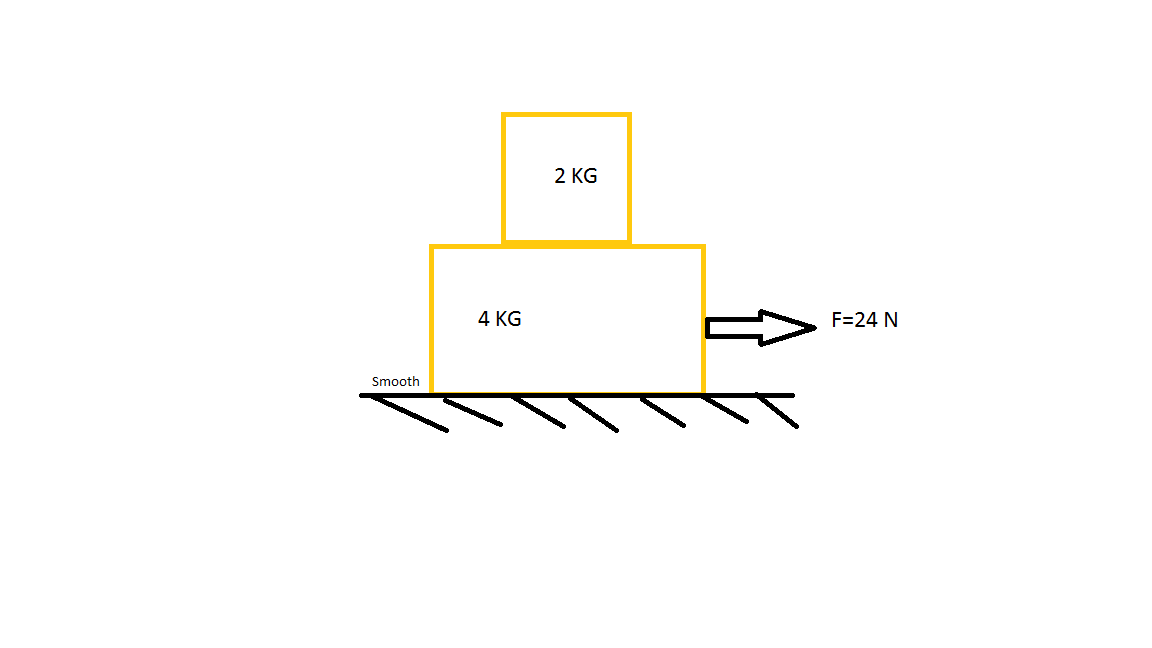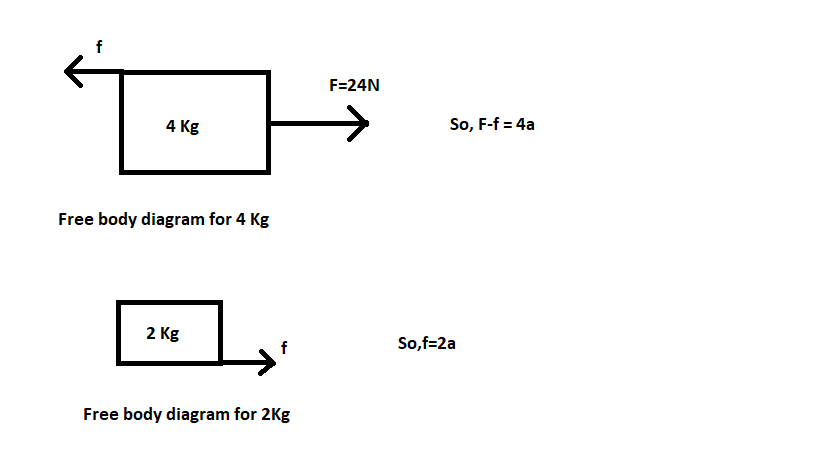In the arrangement the coefficient of friction between the 2 blocks is#mu=1//2#What is the force of friction acting between the 2 blocks?

3 Answers
Explanation:
For ,the two blocks to move together,we can say the frictional force acting at the interface of the two blocks must supply the required force(

So,we can say for the larger block,
or,
And,for the smaller block,
So,comparing both,
or,
So,
Let's,see maximum value of frictional force that can act at their interface ,it is
So,required frictional force is enough for the two blocks to move together.
Note,frictional force will not act by
Explanation:
Supposing no slipping the set is accelerated as
During carrying the upper block is submitted to a traction force of
this force compared with the maximum static traction force gives
so no slip occurs and the upper block is actuated with a force of
The force of friction acting on the 2 kg block will be 8 N in the direction of the 24 N force.
Explanation:
Analysis to determine whether or not the 2 kg block slips:
If slipping does not occur, what will be the acceleration of the blocks?
Would the friction be able to support the 2 kg block accelerating at
The 2 kg block would need a force,
Will the force of friction,
Yes,
I hope this helps,
Steve



